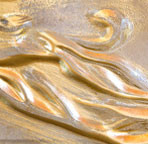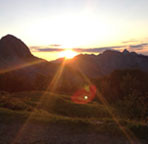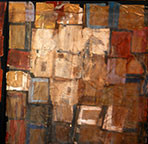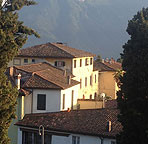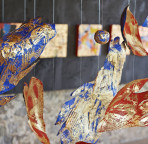An artist’s work ultimately becomes a sign of the relationship between God’s creative freedom and the artist’s human freedom. Just as the hermit struggles with his own freedom in order to receive a greater one, the artist also struggles with his or her own freedom in the presence of an awesome and absolute Divine Freedom. As such, the work of art reveals much about the artist’s struggle with his or her own freedom. This struggle is given vision in the artist’s personal style. It is for this reason that even in the 30,000-year-old paintings at Lascaux, one can sense the struggles and hopes of souls unknown to us but now expressed in the creative way those ancient artists depicted the animals that were so much a part of their way of life.
—Alejandro Garcia-Rivera, A Wounded Innocence: Sketches for a Theology of Art
Alejandro Garcia-Rivera presents a number of examples of specific works of art, both historic and contemporary, as he explores his premise that works of art articulate issues of doctrine. When speaking of the relationship between the creative freedom of the artist and the absolute freedom attributed to God the Creator, Garcia-Rivera introduces the work of a Camaldolese monk, Fr. Aurthur Poulin. The work of this hermit-monk emerges from the life of his monastic community. The Camaldolese, whose monasteries are known for their threefold charism, balancing the solitary, and the communal with the missional life, emphasize that monastic life in community and monastic life in seclusion should nourish and sustain one another.

Poulin’s, Christmas Sky at the Hermitage, is a work born of this balance. Garcia-Rivera describes Poulin’s process, “Poulin begins every work by painting layer after layer of black gesso until an image begins to emerge. . . . It reminds me of the ascetic process of the hermit that in-tends to empty the self of all desires and images so that God begins to till the emptiness with images that transcend the resources of the hermit. Black gesso for Poulin is also symbolic of creativity. He doesn’t make it easy on himself. He sees every painting as a spiritual journey and he has to respect the creative process as such and let it unfold as he journeys with it. In fact, his final work is often very different from his original intention. Art, he finds, is a revelation to the artist himself. Something from deep down inside is expressing itself. As such, art, he feels, is a burden and a responsibility. In the early stages of a painting, the faith dimension predominates where one hopes for things unseen. As such, it is the burden of the prophet, the giving birth to something new.”
Comments welcome.

